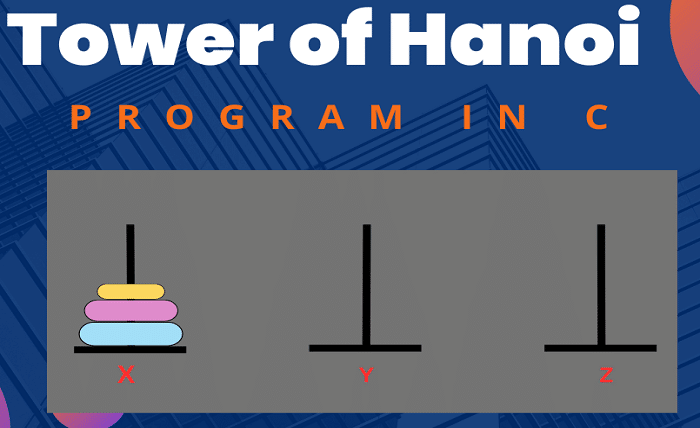Tower of Hanoi Program in C: A Comprehensive Guide

The Tower of Hanoi is a classic mathematical puzzle that consists of three pegs and a set of disks of different sizes. The goal is to move all the disks from one peg to another, following a few simple rules. In this article, we will explore how to write a Tower of Hanoi program in the C programming language. We will discuss the logic behind the puzzle, provide a step-by-step guide to implementing the program, and highlight some key concepts along the way.
What is the Tower of Hanoi?
The Tower of Hanoi is a mathematical puzzle that was invented by the French mathematician Édouard Lucas in 1883. It consists of three pegs and a number of disks of different sizes. The disks are initially placed on one peg in a stacked manner, with the largest disk at the bottom and the smallest disk at the top.
Understanding the Rules
The rules of the Tower of Hanoi puzzle are simple:
- Only one disk can be moved at a time.
- Each move consists of taking the upper disk from one of the stacks and placing it on top of another stack.
- A larger disk should never be placed on top of a smaller disk.
Recursive Approach
The Tower of Hanoi problem can be elegantly solved using recursion. The recursive solution follows a divide-and-conquer strategy. To solve a Tower of Hanoi puzzle with ‘n’ disks, we need to follow these steps:
- Move ‘n-1’ disks from the source peg to the auxiliary peg.
- Move the remaining largest disk from the source peg to the destination peg.
- Move the ‘n-1’ disks from the auxiliary peg to the destination peg.
Implementing the Tower of Hanoi Program in C
To write a Tower of Hanoi program in C, we need to define a function that takes the number of disks and the names of the source, auxiliary, and destination pegs as parameters. Here’s a basic outline of the program structure:
Step-by-Step Explanation of the Code
Let’s walk through the Tower of Hanoi program step by step:
- In the
towerOfHanoifunction, the base case handles the scenario when there is only one disk. It simply prints the move from the source peg to the destination peg. - If there are more than one disk, the function makes two recursive calls:
- The first recursive call moves ‘n-1’ disks from the source peg to the auxiliary peg, using the destination peg as the intermediate peg.
- The second recursive call moves the remaining largest disk from the source peg to the destination peg.
- Finally, the third recursive call moves the ‘n-1’ disks from the auxiliary peg to the destination peg, using the source peg as the intermediate peg.
- The
mainfunction initializes the number of disks and calls thetowerOfHanoifunction with the appropriate parameters.
Testing and Debugging
Once you have implemented the Tower of Hanoi program in C, it is important to test and debug it to ensure its correctness. You can try running the program with different numbers of disks and observe the sequence of moves printed in the console. Make sure that the program adheres to the rules of the Tower of Hanoi puzzle.
Optimizing the Program
The recursive implementation of the Tower of Hanoi program is simple and straightforward, but it may not be the most efficient solution for larger numbers of disks. There are iterative and non-recursive approaches that can optimize the program by reducing the number of function calls. However, for smaller numbers of disks, the recursive solution is efficient enough.
The Complexity of the Tower of Hanoi
The Tower of Hanoi puzzle has a time complexity of O(2^n), where ‘n’ represents the number of disks. This exponential complexity arises from the nature of the problem, as each disk requires two moves. The space complexity is O(n), as the program requires a recursive call stack to keep track of the disk movements.
Real-World Applications
While the Tower of Hanoi is primarily a mathematical puzzle, its concepts and recursive approach have practical applications in various fields. Some real-world applications include:
- Disk scheduling algorithms in operating systems.
- Solving problems related to the movement of robotic arms.
- Data sorting and searching algorithms.
Conclusion
In this article, we have explored the Tower of Hanoi puzzle and learned how to write a Tower of Hanoi program in C. We discussed the rules of the puzzle, implemented a recursive solution, and provided step-by-step explanations. We also touched upon testing, debugging, and optimizing the program. The Tower of Hanoi puzzle not only enhances problem-solving skills but also serves as a foundation for understanding recursion and its applications.
Read more about Choosing Choice Home Warranty



